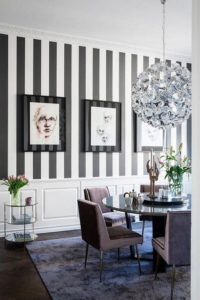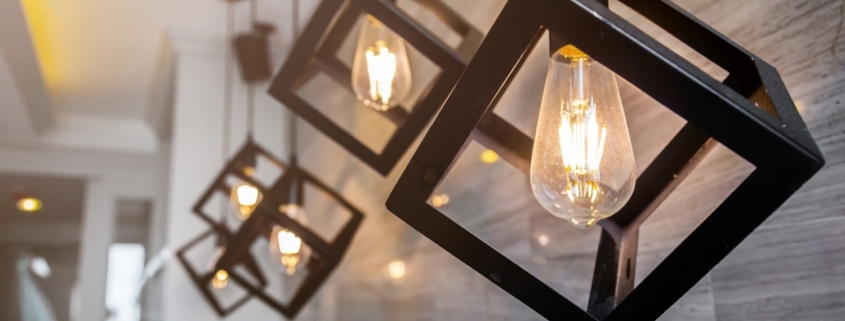Small Space, Big Impact: Design Hacks to Maximize Your Mini-Mansion
Living in a compact space doesn’t have to mean feeling cramped. With a few clever design tricks, you can create the illusion of more square footage and transform your cosy quarters into an oasis of style and comfort. Here are some tips to help you maximize the impact of your miniature masterpiece:
Lighten Up & Let the Sunshine In:
1. Embrace Light Colors: Opt for light and airy colours like white, pale blues, or soft yellows for your walls and major décor elements. These light hues reflect light more readily, making your space feel open and airy.
2. Banish the Bulky Blinds: Heavy curtains or dark blinds can visually shrink your space. Opt for sheer curtains or Roman shades that allow natural light to flood the room. Natural light is not only good for your mood, but it also creates a sense of spaciousness.
3. Strategically Placed Mirrors: Mirrors act like magic windows, reflecting light and visually expanding the footprint of your space. Place a large mirror opposite a window to maximize the natural light or use strategically placed smaller mirrors to create depth and dimension.
Create the Illusion of Height:
1. Vertical Lines are Your Friend: Draw the eye upwards with vertical stripes on wallpaper or accent walls. Hang long, flowing curtains that reach to the floor to create a sense of increased ceiling height.
2. Mind the Scale of Artwork: Oversized artwork can overpower a small space. Choose smaller pieces of art or create a gallery wall with strategically spaced frames to add visual interest without overwhelming the walls.
3. Exposed Brick or Wainscoting (Half Wall): Expose existing brick walls or create a half-wall wainscot treatment. This technique adds visual texture and draws the eye upwards, making your space feel taller.
By incorporating these design tricks, you can create a visually expansive and inviting space, even within a compact footprint. Remember, small spaces can be big on style and functionality with a little creative planning and these design hacks!




 Beyond the Basics: Shades and Accents
Beyond the Basics: Shades and Accents

 Cultivating Creativity: Instead of relying solely on AI-generated suggestions, I actively nurture my creativity through continuous exploration and experimentation. Whether it’s seeking inspiration from nature, art, or diverse cultural influences, I constantly challenge myself to think outside the box and push the boundaries of conventional design.
Cultivating Creativity: Instead of relying solely on AI-generated suggestions, I actively nurture my creativity through continuous exploration and experimentation. Whether it’s seeking inspiration from nature, art, or diverse cultural influences, I constantly challenge myself to think outside the box and push the boundaries of conventional design.
 Ignoring Natural Light: Natural light can drastically affect the ambience and mood of a space. One of the most common mistakes homeowners make is not considering natural light during the design process. Make sure to strategically place windows and skylights to maximize sunlight throughout your home.
Ignoring Natural Light: Natural light can drastically affect the ambience and mood of a space. One of the most common mistakes homeowners make is not considering natural light during the design process. Make sure to strategically place windows and skylights to maximize sunlight throughout your home. Sacrificing Comfort for Style: While it’s essential to create a stylish home, comfort should never be compromised. Opt for furniture and materials that not only look good but also feel comfortable and inviting. Strike a balance between style and comfort to create a space that you’ll love to live in.
Sacrificing Comfort for Style: While it’s essential to create a stylish home, comfort should never be compromised. Opt for furniture and materials that not only look good but also feel comfortable and inviting. Strike a balance between style and comfort to create a space that you’ll love to live in.


 1. Burst of Colors:
1. Burst of Colors: 4. Spiritual Touch:
4. Spiritual Touch:
 Color Trends: Say goodbye to the muted tones of the past, and hello to bold and beautiful hues! Emerald green and night blues take centre stage, injecting energy and sophistication into your space. Keep an eye out for Pantone’s Color of the Year – Peach Fuzz – a warm and inviting shade that adds a touch of playfulness to any room. Pastels are also making a comeback, offering a softer alternative for those who prefer a more subtle palette.
Color Trends: Say goodbye to the muted tones of the past, and hello to bold and beautiful hues! Emerald green and night blues take centre stage, injecting energy and sophistication into your space. Keep an eye out for Pantone’s Color of the Year – Peach Fuzz – a warm and inviting shade that adds a touch of playfulness to any room. Pastels are also making a comeback, offering a softer alternative for those who prefer a more subtle palette. Accessories: Elevate your space with curated accessories that tell a story. Vintage pieces, artisanal creations, and heirlooms add character and charm. Embrace the uniqueness of each item, creating a space that reflects your style and experiences.
Accessories: Elevate your space with curated accessories that tell a story. Vintage pieces, artisanal creations, and heirlooms add character and charm. Embrace the uniqueness of each item, creating a space that reflects your style and experiences. Furniture: Say goodbye to cookie-cutter designs and hello to custom-made furniture that fits your space perfectly. Embrace curvy shapes and dark colours to add a touch of drama and sophistication. Your furniture should be an extension of your personality, so don’t be afraid to mix and match styles for a truly unique look.
Furniture: Say goodbye to cookie-cutter designs and hello to custom-made furniture that fits your space perfectly. Embrace curvy shapes and dark colours to add a touch of drama and sophistication. Your furniture should be an extension of your personality, so don’t be afraid to mix and match styles for a truly unique look.